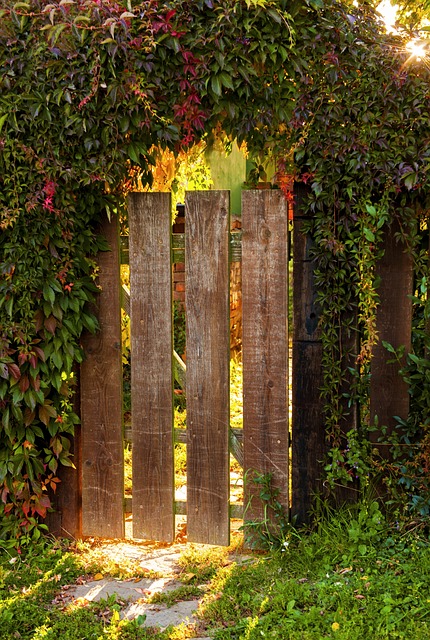Privacy fences have become a popular solution for homeowners seeking to secure their outdoor spaces in New Bedford, MA. This article guides you through the complete process of installing a privacy fence, from understanding its benefits and exploring various types to navigating legal permits and selecting the right materials. We’ll provide a step-by-step installation guide and essential maintenance tips to ensure your new fence remains private and robust for years to come.
- Understanding Privacy Fences: Benefits and Types
- Choosing the Right Material for Your Fence
- Planning and Permitting: Legal Considerations in New Bedford
- Installation Process: Step-by-Step Guide
- Maintenance Tips to Keep Your Fence Private and Strong
Understanding Privacy Fences: Benefits and Types
Privacy fences serve as more than just a physical barrier; they are a symbol of security, peace of mind, and enhanced home value. In New Bedford, MA, where outdoor living spaces thrive, installing a privacy fence offers a multitude of advantages. These structures can protect your yard from curious neighbors, pets, or stray animals, ensuring a quiet, undisturbed environment. Furthermore, they provide a sense of security for families with children who can play safely within the defined boundaries.
There are various types of privacy fences to suit different needs and preferences. Wooden fences exude a classic charm while offering durability and customization options. Vinyl fencing is low-maintenance and comes in an array of styles, colors, and textures. Metal fences, often made from aluminum or steel, provide robust security without sacrificing aesthetics. Each type offers unique benefits, ensuring homeowners can find the perfect solution to create their desired outdoor sanctuary.
Choosing the Right Material for Your Fence
When considering a privacy fence installation in New Bedford, MA, selecting the right material is key to achieving your desired level of privacy and security. Wood has long been a popular choice for its natural aesthetic appeal, but it requires regular maintenance. Composite materials offer a low-maintenance alternative, often designed to mimic the look of wood without the upkeep. Metal fences provide durability and a modern aesthetic, ideal for those seeking a more industrial or contemporary look.
The material you choose should also align with your climate and environmental conditions. In New Bedford’s coastal environment, for instance, materials that can withstand salt air and moisture are essential to prevent premature deterioration. Consider the long-term costs and benefits of each option, including initial investment, maintenance requirements, and expected lifespan to make an informed decision tailored to your needs.
Planning and Permitting: Legal Considerations in New Bedford
When planning to install a privacy fence in New Bedford, MA, understanding the legal considerations is crucial. The city of New Bedford has specific regulations and permitting processes for such installations. Homeowners should research local building codes and zoning laws to ensure their project complies with these guidelines. Failure to obtain the necessary permits can result in penalties or even the removal of the fence.
Permitting involves submitting detailed plans, specifications, and sometimes even design renderings to the appropriate city departments. These departments will review the application to verify that the proposed fence adheres to safety standards, set back requirements, and aesthetic guidelines specific to New Bedford. It’s important for property owners to be proactive in this process, as delays can extend the overall timeline of the project.
Installation Process: Step-by-Step Guide
The installation process for a privacy fence in New Bedford, MA, involves several careful steps to ensure a secure and aesthetically pleasing finish. First, survey the area and determine the layout of your desired fence, taking into account any local regulations or property lines. Next, clear the site by removing any debris, plants, or obstacles that might interfere with construction.
Digging begins next, creating holes for the fence posts. Ensure these are deep enough to support the structure’s weight. After setting the posts and securing them with concrete, attach the vertical supports and horizontal rails according to your chosen design. Finally, install the panels, ensuring proper alignment and sealing any gaps for a robust and private barrier.
Maintenance Tips to Keep Your Fence Private and Strong
Regular cleaning is key to maintaining your privacy fence. Over time, dirt, leaves, and other debris can accumulate, compromising the fence’s aesthetic appeal and structural integrity. Use a pressure washer or a soft-bristled brush to remove any built-up grime, ensuring you clean both sides thoroughly. Applying a fresh coat of paint or sealant annually will protect the wood from moisture and UV damage, preserving its strength and longevity.
Inspect your privacy fence at least bi-annually for any signs of wear, rot, or pest infestation. Addressing issues promptly prevents minor problems from escalating into major repairs. Tighten any loose boards or posts to maintain the fence’s stability and security. Keep an eye out for damaged pickets, and replace them as needed to keep the fence effectively screening your space.
